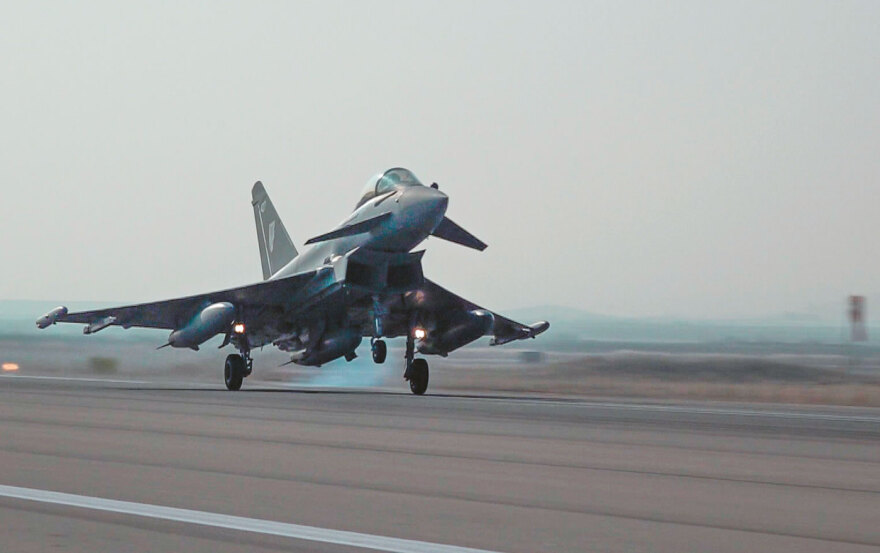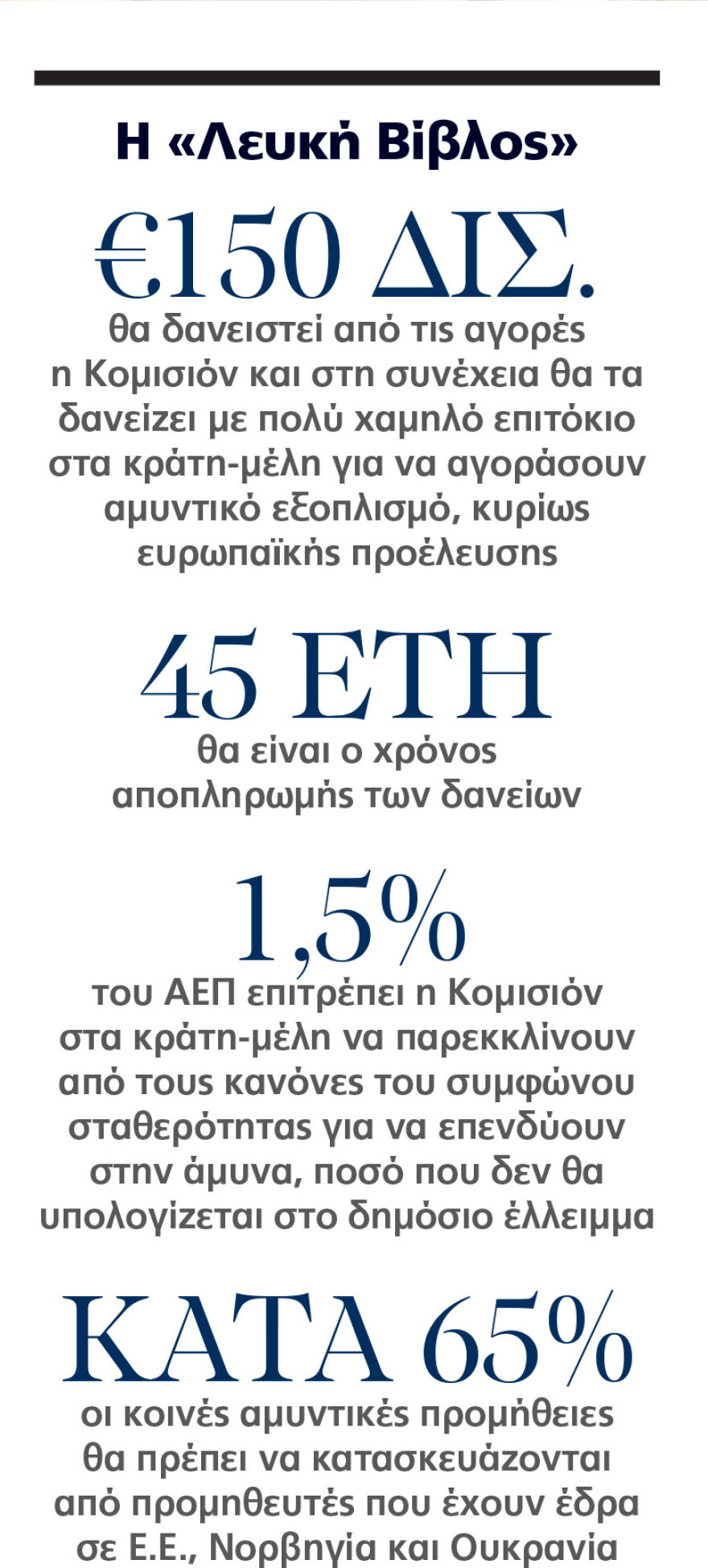Within just a few weeks the Summits her European Union with the main object of defense and security, its interventions European committeeas well as the meetings of the so -called “willing states” on Ukraine’s security have succeeded each other at a frantic pace, in an attempt to find the means and methods for the massive and rapid re -equipment of the European Union.
The idea of EU defense autonomy It’s not new. Already in 2015 the Former European Commission President Jean-Claude Juncker He had publicly called for the creation of a European army, but a proposal rejected by the Member States of the Union.
Ten years later, and specifically at the European Council of last Thursday, March 20, the 27 Heads of State and Government of the EU. They have resulted in a common strategy to increase defense potential over the next five years. The timetable is no coincidence as, except that some European intelligence services have warned of possible Russian aggression in one or more Union countries within three to five years, several European governments do not exclude the United States’ partial or total military withdrawal scenario from the United States.
The framework had already been presented by the European Commission with the so -called “White Bible” for Europe’s re -equipment, with which the EU Executive Body. It hopes that up to € 800 billion could be allocated by 2030 for the purchase of defense equipment, the majority of which should be produced in the EU.
Where will the money be found
The key points of the plan include a new fund called SAFE (Security Action for Europe), through which Member States will have access to 150 billion euros borrowed from the markets or Commission And then it will lend them at a very low interest rate on the member states. The reason is that the European Commission, which has a top rating (AAA) in its credit rating, can borrow at much lower interest rates than many Union states. The deadline for submitting a loan request is June 30, 2027 and countries should repay them within 45 years. At the same time the Commission allows the EU Member States. Derminate from the rules of the Stability Pact so that they can invest in defense up to 1.5% of their GDP each year, a percentage not calculated in the public deficit, which with the most optimistic forecasts can mobilize up to 650 billion euros.
Several in Brussels However, they believe that the target of € 800 billion will never be reached. Some of the largest and richest EU member states, with top credit ratings, such as Germany, which announced the increase in its defense spending by up to $ 500 billion, have no intention of receiving loans that will be backed by the EU, while some of the EU, while some of the EU,
In an effort to stimulate the European Defense Industry and to satisfy the largest defense producer of the EU, that is, France, the Commission stipulates that common defense supplies funded under Safe should be built by 65% of suppliers in the EU. Although loans will only be available in these countries, common defense supplies will include third countries.
Specifically, the member countries of European Economic Area (EEA/EHES)namely Switzerland, Iceland and Liechtenstein, countries with which the Union has a partnership of security and defense, such as Moldova, South Korea, Japan, Albania and Northern Macedonia, but also “the countries, candidate countries and countries”. And although the United Kingdom is currently out of the frame, Turkey, as a candidate for integration, could, under certain conditions, benefit.

Turkey’s role
According to European Commission proposals, candidates for integration can participate in common defense supplies, but without being able to receive loans through the mechanism SAFE. OR Turkeyas a candidate country, could theoretically receive a piece of the hundreds of billions of euros in the defense for the next five years.
In the “White Bible” of the Commission there is a special paragraph for the neighbor, which states, inter alia, that “Turkey is a candidate for EU accession. and long -term partner in the field of Joint Security and Defense Policy. The EU It will continue to be constructively committed to developing a mutually beneficial partnership in all areas of common interest, “but always with the conclusions of the European Council of April 2024.
Something that satisfies the positions of Athens and Nicosia, as the European Council had essentially linked progress to the two sides’ relations with the Cyprus problem and the situation in the Eastern Mediterranean. However, the defense capabilities of the EU In specific equipment, such as unmanned aircraft (UAVs) and Anti-Drone systems, they are extremely limited, which is worried Member States such as Poland and Germany.
Turkey wishes to fill this gap by participating in projects with European companies. In early March, Italian defender Leonardo announced his collaboration with Turkish Baykarowned by the groom of Turkish president for the production of unmanned aircraft, as this market is estimated to reach 100 billion euros in the next 10 years.

The UK
The United Kingdom It is not only the second nuclear power on the European continent, but also a country with strong defense industries that are already working on many pan -European defense projects. European officials know that the production chains between the two sides are so complex and powerful that it would be extremely detrimental to break. British companies, such as defender Bae Systems, are involved, among other things, in the production of the fighter Eurofighter Typhoonalong with the European Airbus and the Italian Leonardo, which is working with Turkish Baykar, while the same industry also participates in the French -Italian MBDA missile manufacturer.
Within this context, the United Kingdom is characterized by the “white” white “white” “essential ally”, while Brussels and London fights with time for British companies to participate in Europe’s re -equipment. The head of European diplomacy Kaya Calas will go to London to prepare the ground for the European Union – United Kingdom Summit, which will take place next May with a key to the signing of a defense and security agreement that will open its door to the EU. and in the British industries.

Made in Europe or …
Although one of the main proposals of the Commission to the EU Member States. and France’s basic desire is ‘buy Made in Europe’, the defensive dependence of European countries on USA It’s huge. The largest weapon importer within the Union today is the Polandwhich supplies 87% of its weapons systems from United States and South Korea. For the Netherlandsthe second largest importer within the Union, or for the Italythe situation is even more spectacular. The US represents 97% and 94% of their weapons purchases respectively. OR Greece is an exception, as the largest supplier in our country is the France.
At the same time, the overwhelming majority of EU states, including Greece, uses US -made Patriot anti -aircraft systems. Although Portugal became the first country to cancel the market for US F-35 fighters due to Donald Trump’s policy, the first indication of whether the EU. It will buy “Made in Europe” or continue to rely on the US defense industry will be seen in the coming weeks. When Denmark, the country facing the US president’s threats to the annexation of Greenland, will, according to the Danish Ministry of Defense, decide on the supply of air defense systems between two alternatives: the US Patriot and the European System (Franco).
Photos: Eurokinissi, Getty Images / Ideal Image
